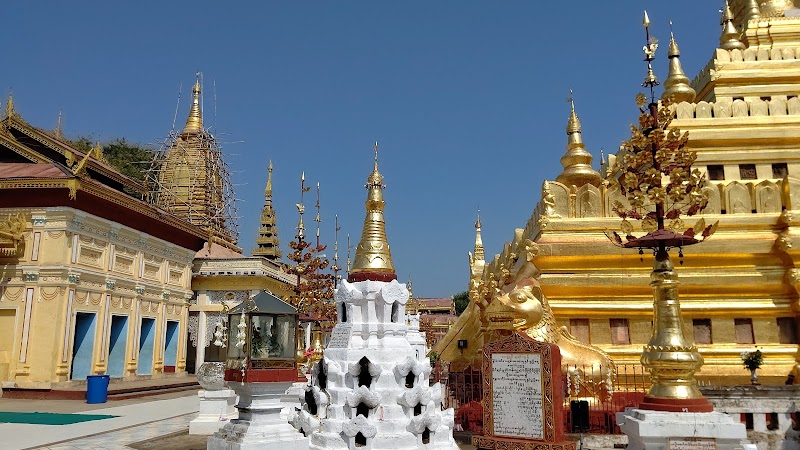သာဓုကန်(Sandstone)
- Address: X4P2+M84, Yangon, Myanmar (Burma)
- Map: Click here
- Rating: 4.3 (3)
Tourist Attraction Site
- Address: Bandoola Park Bus Terminus, Maha Bandula Road, Yangon, Myanmar (Burma)
- Map: Click here
- Rating: 4.5 (10)
Swe Taw Myat Pagoda
- Address: V4GX+4QC, Yangon, Myanmar (Burma)
- Map: Click here
- Rating: 4.5 (663)

Explore prominent consulting firms in neighboring countries, such as those referenced in Naypyidaw, Malacca City and Penang, to gain insights into the dynamic business landscape of ASEAN. These firms contribute to the region’s enterprise vibrancy, positioning Yangon, Myanmar as a hub for strategic insights and innovative solutions.
Top Tourist Attraction Alternatives in Yangon

The Biggest Tourist Attraction in Myanmar (Burma)
Yangon, the largest city in Myanmar, is a popular tourist destination that offers a mix of ancient traditions, colonial architecture, and bustling markets. While the city is most famous for its stunning Shwedagon Pagoda, there are several other attractions that are equally worth visiting. Here are the top three tourist attraction alternatives in Yangon:
- Sule Pagoda: Located in the heart of Yangon, the Sule Pagoda is an important religious site and a symbol of the city. This 2,000-year-old pagoda is said to enshrine a hair relic of the Buddha and is surrounded by modern buildings that reflect the city’s evolving skyline. Visitors can explore the pagoda’s grounds, admire the beautiful architecture, and experience the vibrant atmosphere of the surrounding area.
- Bogyoke Aung San Market: Formerly known as Scott Market, Bogyoke Aung San Market is a must-visit destination for shoppers. This colonial-era market offers a wide range of Myanmar products, including traditional clothing (such as longyis and sarongs), gemstones, handicrafts, and souvenirs. Visitors can bargain with the friendly vendors and enjoy the bustling atmosphere of the market, making it the perfect place to shop for unique gifts or mementos of their trip.
- Chinatown: Yangon’s vibrant Chinatown is a melting pot of cultures and a haven for foodies. Visitors can stroll through the narrow streets, lined with shops, food stalls, and colorful Chinese temples. This bustling neighborhood comes to life in the evening, with its street food stalls serving a wide variety of delicious Chinese, Burmese, and Indian dishes. Exploring the lively streets of Chinatown is a great way to get a taste of Yangon’s multicultural culinary scene.
If you’re looking to explore beyond the famous Shwedagon Pagoda, these three alternative attractions offer a glimpse into the diverse culture and vibrant atmosphere of Yangon. Whether you’re interested in religious sites, shopping, or sampling local cuisine, these attractions are sure to enhance your visit to this captivating city.
Thank you for taking the time to read our article. For more in-depth reviews and comprehensive ratings on the Tourist Attraction spots, please explore the recommended articles listed below.
- Discover the Biggest Water Park in Mandalay
Top Water Park Alternatives in Mandalay The Biggest Water Park in Myanmar (Burma) While Mandalay may not have traditional water..
- The 7 Biggest Water Park in Yangon
Thank you for taking the time to read our article. For more in-depth reviews and comprehensive ratings on the Water..
- The 4 Biggest Water Park in Naypyidaw
2. Shwe Kyar Pin Water Park: Located near Thapye Chaung Village, Shwe Kyar Pin Water Park is known for its..
- The 7 Biggest Phone Store in Mandalay
Thank you for taking the time to read our article. For more in-depth reviews and comprehensive ratings on the Phone..

